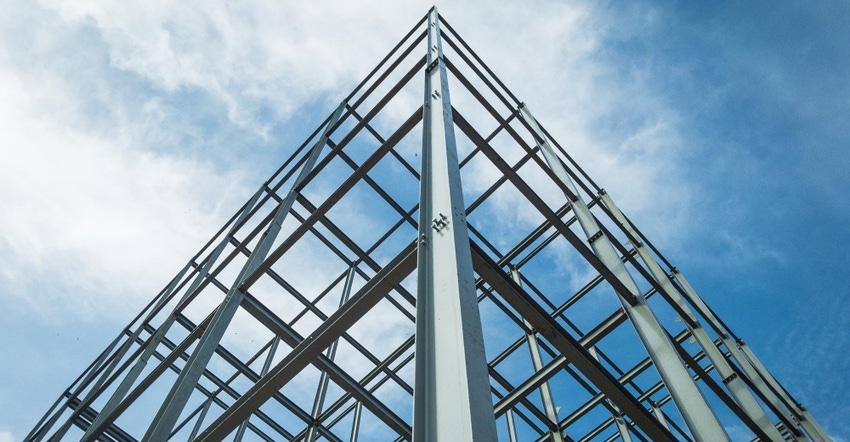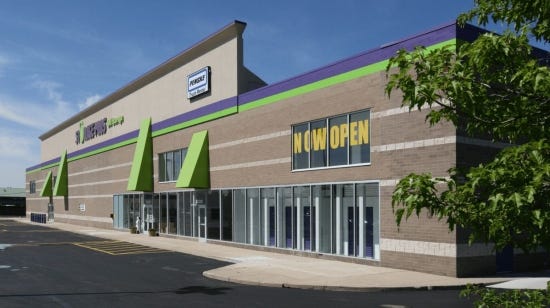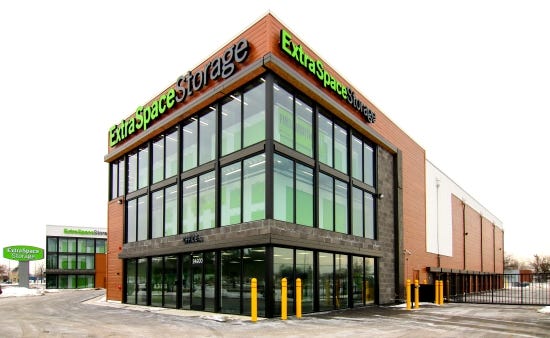As finding land in premium locations continues to be a challenge, many self-storage developers are turning to multi-story building to expand their options. Read about three primary tactics for building this product type and key design considerations.

The decision to incorporate multiple stories into a self-storage development is driven by cost, necessity and opportunity. As always, there’s a balancing act between the expense to build and the financial benefit. The additional revenue—and, more important, the profit—must offset the cost of components such as elevators, stairs and fire-protection equipment.
To add another floor to an otherwise viable single-level facility only to gain a bit more rental area would be a mistake. Yes, you might make more money, but you’d also likely wipe out your profit margin. On the other hand, you could generate almost triple the rentable area of a 40,000-square-foot footprint by going to three levels, and it wouldn’t create a significant increase to the price of foundation, roof, sitework, glass, entry doors and so on. Each site must be evaluated for multi-level potential based on its own merits.
Following are three popular ways to go vertical in self-storage. I’ll also discuss additional design considerations for these types of projects.

StoragePros in Southfield, Michigan, a multi-story conversion
Three Options
Multi-story self-storage is achieved through the following three primary tactics:
Conventional stacked floors. This is a common approach. Most municipalities allow for two to three stories in commercial and industrial districts. The sheer efficiency of site disturbance and required acreage drives most of the decision-making factors here. Three-story buildings are the most cost-effective since the steel structure need not be fire-rated until four stories and higher. Many companies provide pre-engineered building packages to fulfill the demand for this type.
Conversion with mezzanine. Warehouses, grocery stores, big-box retail and even sports facilities are all good opportunities for self-storge conversion. Usually, these buildings have thicker floor slabs and high ceilings, allowing the developer to add a simple mezzanine level within the building itself. Floor-to-floor height is critical in these cases, as lighting, fire suppression and air ducts are difficult to fit when the floors are too close together. I always recommend adding more than 10 feet between floors, with 11 feet as ideal.
These facilities also require elevators and stairs, which can eat away efficiency. Other cost implications include reworking HVAC, fire suppression, ceilings and lighting. If you’re in the conversion game for low cost and simplicity, multi-story might not make sense, even if you look up from one of your storage units and the ceiling is 20 feet above you.
Sloping site (two story into a hill). From a grading perspective, the natural topography of a property can create challenges for many building types, requiring fill and retaining walls. However, when you’re building interior, climate-controlled self-storage, a fair amount of slope can be a blessing. You can place an entry point on both a lower and upper level from different locations on the property. Although not always the case, this tactic can eliminate the need for stairs or elevators, providing an opportunity to maximize efficiency without the added cost.

Extra Space Storage in Eastpointe, Michigan, with conventional stacked floors
Additional Considerations
In all multi-level self-storage building, you must consider the location and quantity of elevators, floor-to-floor heights, and loading areas. Also, many cities now require a single or pair of unisex bathrooms on all odd-numbered floors, including the ground level. On the plus side, these taller buildings can display higher signage, which increases visibility. You may even have the opportunity to include upper-level windows through which passersby can see colorful unit doors.
Elevators should be centrally located or spread evenly throughout the facility. It may seem logical to put them near the ends or edges of the building, but certain locations could dramatically increase the walking distance for some tenants from the entrance to their unit. You must minimize that distance or risk objectionable upper-level units that struggle to lease up. When you find the need for multiple elevators, consider dispersing them for the same reason.
Interior or drive-through loading areas also present a dilemma in a multi-story self-storage project. To accommodate a vehicle or large truck, the ceiling must be taller than the conventional floor-to-floor height, which can add expense and thousands of cubic feet of unnecessary volume in the building design. You even risk the structure height exceeding what is allowable by zoning code. There are several strategies for resolving this, however, including drive aisles placed adjacent to one side of the building or only providing a popped ceiling in a pull-in/pull-out loading bay. In big-box conversions, existing loading docks can often be retrofitted.

A rendering of TD Self Storage in Greenville, South Carolina, which is built on a slope
Whether you’re looking to build self-storage on a small site, convert an existing single-story structure or just need to appease the local jurisdiction, multi-story development could be the answer. Explore the options and opportunities of this building type, then weigh the costs to determine if it’s right for your next project.
Peter Stuhlreyer is chief architect for Designhaus LLC, which provides professional architectural services as well as interior and landscape design to self-storage and other business sectors. He’s been the architect for more than $250 million worth of commercial and residential construction. For more information, call 248.601.4422 or email [email protected].
About the Author(s)
You May Also Like





